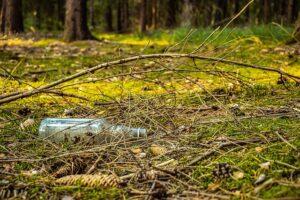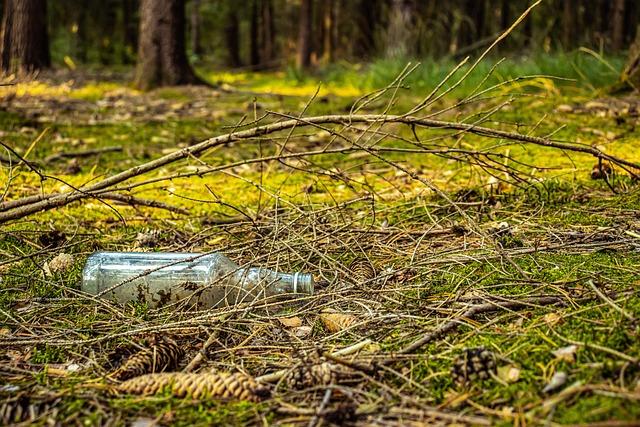 The rubbish app
The rubbish app
This is an idea I’ve had for a long time. It’s one of those ideas that drifts through my thoughts every time I’m out on a run somewhere and see trash.
I live in a fairly rural part of the country. Even though I’m ~40 miles crow-fly from Boston. The roads here are old New England roads. Twisty, hilly, sparsely populated and reforested.
It pains me to see all the trash.
Every year I use my two volunteer days to go out and clean a section of the roads around my house. Sometimes it’s the same section I cleaned the year before.
Every year for decades my running club has gone out and cleaned the Groton Road Race course. And every year we pull out bags of trash.
In my OCD mind I keep track of what I’m picking up. It’s mostly bottles and cans. There are hot spots that have the same brand of beer can or the same nip bottles. It’s obvious that someone with a bit of a problem is drinking on the way to or from work in their car and heaving the evidence out the window in these secluded spots.
In my mind I know I could plot the density of the cans and bottles by brand and I could probably triangulate which liquor store or market they are stopping at. It wouldn’t be too hard to set a trail cam and catch them in the act.
I don’t understand why people litter. I guess I understand why the alcoholics want to throw the stuff out. But what causes people to throw trash out the windows of their cars? It seems terribly anti-social to ruin these pretty New England roads when they could just bring it home and throw it out or recycle it.
But, I guess that’s probably the point. They are angry about something. They are lashing out by making the world just a bit shittier for everyone else, right?
The litterers are not the real problem anyhow. The single use packages are the source of the problem with the collusion of the retail outlets.
Let’s take nip bottles. These are the little one-ounce plastic bottles. Every market with a liquor license has big bins of these sitting on the counter next to the register. I ask you, is there any other use for these than alcoholics drinking in their cars?
Seems to me these little nips are incredibly wasteful in terms of packaging and harmful in terms of enablement but they are sold and thrown out car windows by the bucketful.
There is one little section of wooded road that I cross on my regular trail route that is a hot spot for these nip bottles. It’s usually some sort of flavored vodka. I stopped on my way back last week and filled my pockets, but there were too many. I had to use Ollie’s poop bag as a carrying container.
And that was only one side of the road.
There was as similar hot spot on the old Groton Road Race course that we would clean every year where someone had a Bud Light enthusiasm. Breakfast of champions. We’d pull a few dozen cans out every year in that one spot. It got to the point where we knew whoever was creating this local deposit was still alive and flourishing by their output levels.
My point here is that the location and make up of the trash itself tells a story. When we are out on our trash collecting sprees we are like archeologist piecing together a history from the finds.
So my idea, going back to paragraph one, is ‘Why not build a data base of what we pick up?’
It wouldn’t be that hard. With today’s cloud technology you could describe the topography of the litter content easily. Each of these beer cans and nip bottles has a barcode on it. That barcode contains the UPC. The UPC is the Universal Product Code, which identifies what the product is, where it was made and when.
My phone also has GPS and mapping on it. The app could easily geolocate these finds.
Imagine this. Every year on earth day we have a few hundred people out there picking up trash. We also have people like me who are picking up trash of their own volition. Imagine that instead of just throwing that beer can in the bag, I scan the UPC before I throw it into the bag, maybe even take a picture, and that data is tagged to the address and location and uploaded to the regional trash data base.
Imagine equipping all the volunteers with the app.
Imaging what that database would look like over time. You would have the volume and location of individual product packaging over time.
Think of the analytics you could do. You could tie the litter back to not only the retail outlet but also to the manufacturer. Hand this data set over to an enthusiastic environmental lawyer and you could, I imagine hold the entities that are the actual source of the packaging problem accountable.
You could open the data up to law enforcement and perhaps get some mobile alcoholics that help they need.
This data would also encourage people to pick up the trash. When you know you are having an actual impact on the source of the problem it would be easier to motivate people to help. Otherwise it’s like shoveling water because as soon as you pick it up, more comes.
This brings a few questions up in my mind about how could you prevent overly enthusiastic Greens from faking the data out of spite – but you could build some guidelines around that. The data would soon become very obvious regardless of a few false positives.
When I go out every year I pull out 2-3 giant trash bags of trash. Every year I get people who pull over and thank me for doing it. Which is nice. When I get the bags back to my house I sort the trash.
The majority of it, like 95% is recyclable. More than 80% is cans and bottles, which where I live are worth a nickel. I sort it because we get charged by the bag in my town for trash but the recycling is free. Bottom line, I sort it so it doesn’t cost me money to pick up the trash. I could make a couple bucks if I wanted to bring the cans and bottles to a redemption machine. But, I donate them. The town has a place you can drop them and local groups benefit from the redemption.
This is the dirty truth of the packaging industry. Back in the 70’s when citizens in my country started to become concerned with pollution, there was a big push to regulate the packaging industry. The packaging industry pulled a nice little magic trick. They created and promoted recycling as the solution – thereby pushing the responsibility for the problem away from the source and back on the consumer.
The result was we expect alcoholics to pass by a bin of delicious single use berry flavored vodka at the register or to care about the nickel deposit on a beer can.
Seems to me those are the least responsible people to be in charge of the solution.
However, if I had a massive regional data set that clearly showed the impact on private and public land by producer and retailer, well, that might just be something.
Postscript: I’m telling you this idea in the hope that one of you will make it happen. Go ahead and create this app for us. We’ll us it. It may already exist. The cynic in me suspects it may exist and the patents are all owned by the packaging industry.
But, hope springs eternal.

